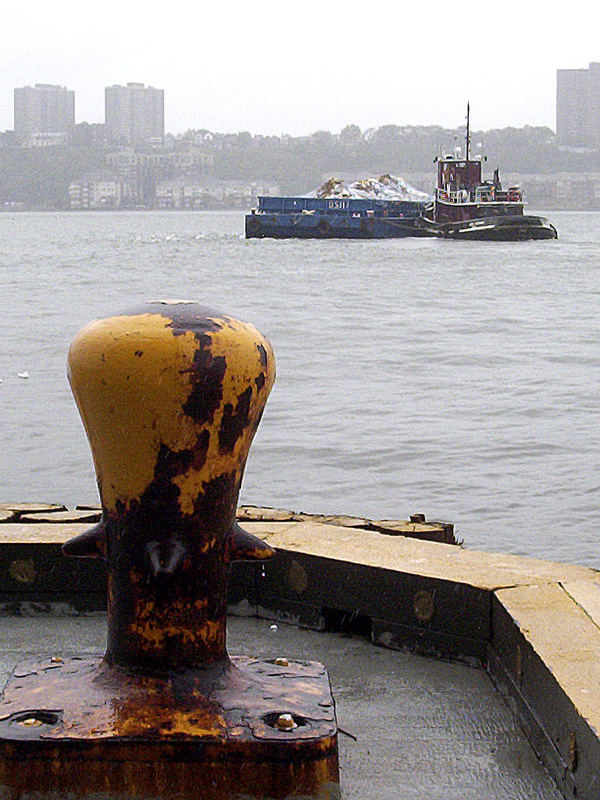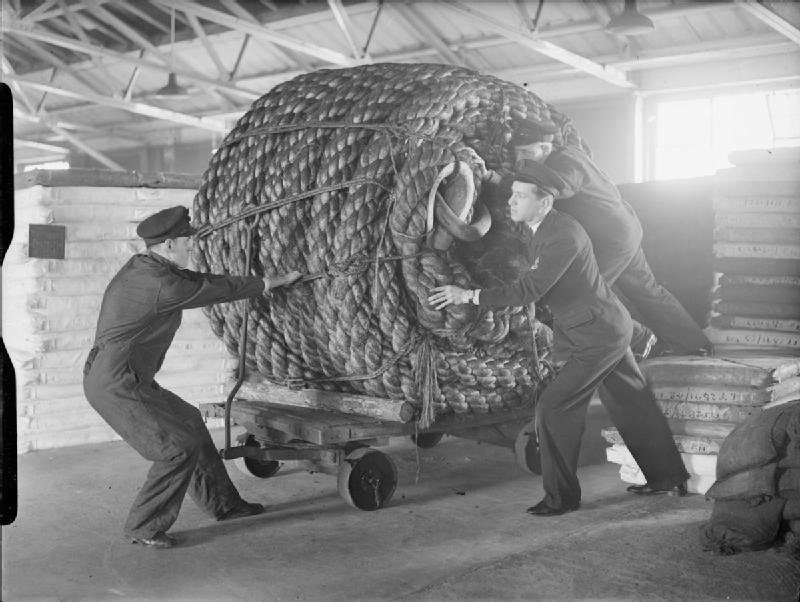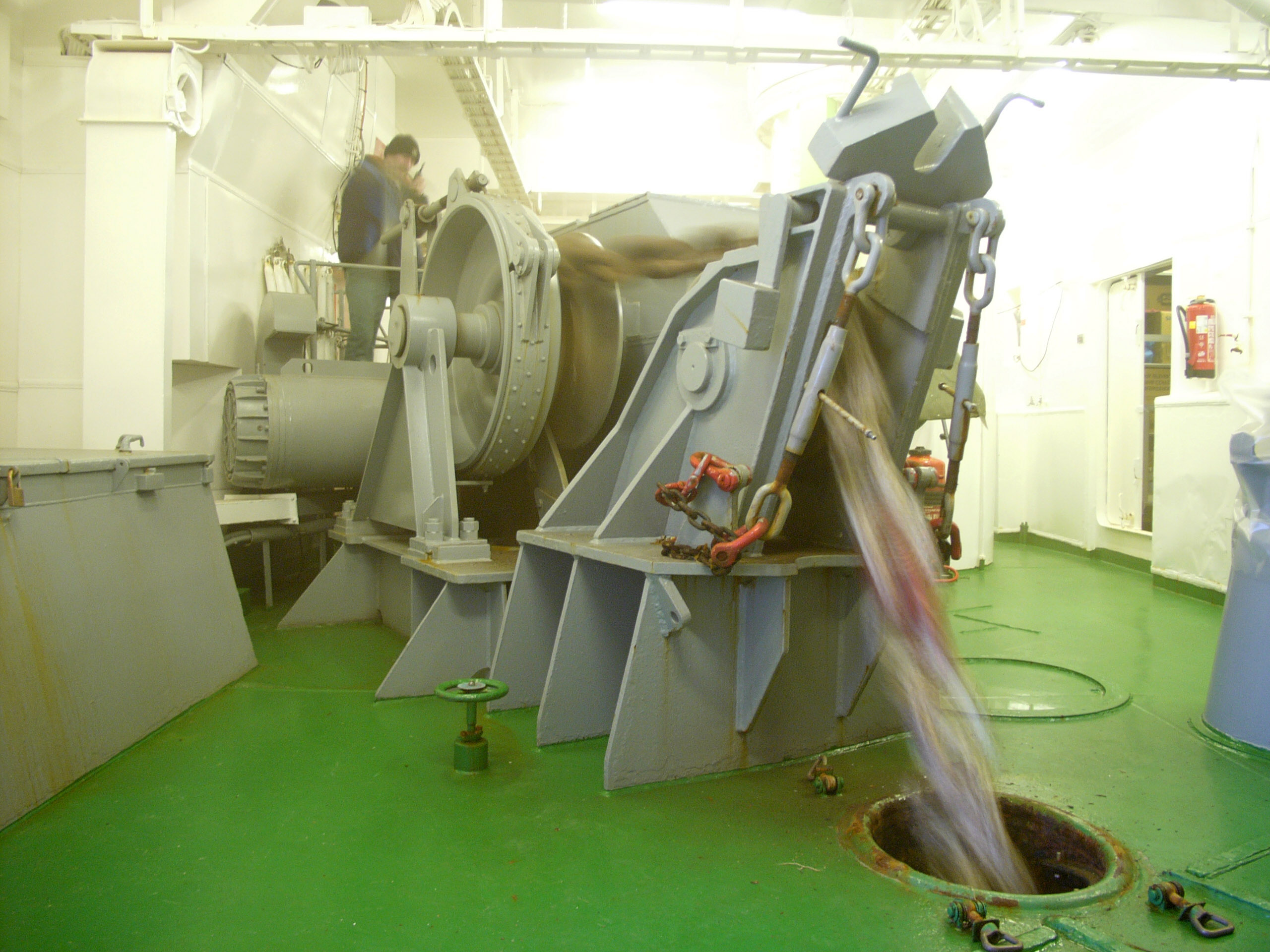|
Bitts
Bitts are paired vertical wooden or metal posts mounted either aboard a ship or on a wharf, pier, or quay. The posts are used to secure mooring lines, ropes, hawsers, or cables. Bitts aboard wooden sailing ships (sometime called cable-bitts) were large vertical timbers mortised into the keel and used as the anchor cable attachment point. Bitts are carefully manufactured and maintained to avoid any sharp edges that might chafe and weaken the mooring lines. Use Mooring lines may be laid around the bitts either singly or in a figure-8 pattern with the friction against tension increasing with each successive turn. As a verb ''bitt'' means to take another turn increasing the friction to slow or adjust a mooring ship's relative movement. Mooring fixtures of similar purpose: * A bollard A bollard is a sturdy, short, vertical post. The term originally referred to a post on a ship or quay used principally for mooring boats. In modern usage, it also refers to posts installed to ... [...More Info...] [...Related Items...] OR: [Wikipedia] [Google] [Baidu] |
Bollard Aboard The RV Thomas G
A bollard is a sturdy, short, vertical post. The term originally referred to a post on a ship or quay used principally for mooring boats. In modern usage, it also refers to posts installed to control road traffic and posts designed to prevent automotive vehicles from colliding with pedestrians and structures. Etymology The term is probably related to bole, meaning a tree trunk. The earliest citation given by the ''Oxford English Dictionary'' (referring to a maritime bollard) dates from 1844, although a reference in the ''Caledonian Mercury'' in 1817 describes bollards as huge posts. History Wooden posts were used for basic traffic management from at least the second half of the 17th century. One early well-documented case is that of the "postes and rales in ye King's highway for ye (safety) of all foot passengers" erected in 1671 in the High Street of Old Brentford, Middlesex (part of the London–Bath road). Another is that of "two oak-posts" set up next to the med ... [...More Info...] [...Related Items...] OR: [Wikipedia] [Google] [Baidu] |
Mooring (watercraft)
A mooring is any permanent structure to which a seaborne vessel (such as a boat, ship, or amphibious aircraft) may be secured. Examples include quays, wharfs, Jetty, jetties, piers, anchor buoys, and mooring buoys. A ship is secured to a mooring to forestall free movement of the ship on the water. An ''anchor mooring'' fixes a vessel's position relative to a point on the bottom of a waterway without connecting the vessel to shore. As a verb, ''mooring'' refers to the act of attaching a vessel to a mooring. The term likely stems from the Dutch language, Dutch verb ''meren'' (to ''moor''), used in English since the end of the 15th century. Permanent anchor mooring These moorings are used instead of temporary anchors because they have considerably more holding power. They cause lesser damage to the marine environment, and are convenient. Where there is a row of moorings they are termed a tier. They are also occasionally used to hold floating docks in place. There are ... [...More Info...] [...Related Items...] OR: [Wikipedia] [Google] [Baidu] |
Bollard
A bollard is a sturdy, short, vertical post. The term originally referred to a post on a ship or quay used principally for mooring boats. In modern usage, it also refers to posts installed to control road traffic and posts designed to prevent automotive vehicles from colliding with pedestrians and structures. Etymology The term is probably related to bole, meaning a tree trunk. The earliest citation given by the ''Oxford English Dictionary'' (referring to a maritime bollard) dates from 1844, although a reference in the '' Caledonian Mercury'' in 1817 describes bollards as huge posts. History Wooden posts were used for basic traffic management from at least the second half of the 17th century. One early well-documented case is that of the "postes and rales in ye King's highway for ye (safety) of all foot passengers" erected in 1671 in the High Street of Old Brentford, Middlesex (part of the London–Bath road). Another is that of "two oak-posts" set up next to the ... [...More Info...] [...Related Items...] OR: [Wikipedia] [Google] [Baidu] |
US Navy 070313-N-9486C-001 Fast Attack Submarine USS Bremerton (SSN 698) Returns To The Operational Side Of The Pacific Submarine Force As She Returns To Pearl Harbor Naval Station
US or Us most often refers to: * ''Us'' (pronoun), the objective case of the English first-person plural pronoun ''we'' * US, an abbreviation for the United States US, U.S., Us, us, or u.s. may also refer to: Arts and entertainment Albums * ''Us'' (Brother Ali album) or the title song, 2009 * ''Us'' (Empress Of album), 2018 * ''Us'' (Mull Historical Society album), 2003 * ''Us'' (Peter Gabriel album), 1992 * ''Us'' (EP), by Moon Jong-up, 2021 * ''Us'', by Maceo Parker, 1974 * ''Us'', mini-album by Peakboy, 2019 Songs * "Us" (James Bay song), 2018 * "Us" (Jennifer Lopez song), 2018 * "Us" (Regina Spektor song), 2004 * "Us" (Gracie Abrams song), 2024 * "Us", by Azealia Banks from '' Fantasea'', 2012 * "Us", by Celine Dion from ''Let's Talk About Love'', 1997 * "Us", by Gucci Mane from '' Delusions of Grandeur'', 2019 * "Us", by Spoon from '' Hot Thoughts'', 2017 Other media * US Festival, two 1980s California music festivals organized by Steve Wozniak * ''Us'' (1991 ... [...More Info...] [...Related Items...] OR: [Wikipedia] [Google] [Baidu] |
Wharf
A wharf ( or wharfs), quay ( , also ), staith, or staithe is a structure on the shore of a harbour or on the bank of a river or canal where ships may dock to load and unload cargo or passengers. Such a structure includes one or more Berth (moorings), berths (Mooring (watercraft), mooring locations), and may also include piers, warehouses, or other facilities necessary for handling the ships. Wharves are often considered to be a series of docks at which boats are stationed. A marginal wharf is connected to the shore along its full length. Overview A wharf commonly comprises a fixed platform, often on deep foundation, pilings. Commercial ports may have warehouses that serve as interim storage: where it is sufficient a single wharf with a single berth constructed along the land adjacent to the water is normally used; where there is a need for more capacity multiple wharves, or perhaps a single large wharf with multiple berths, will instead be constructed, sometimes projecting ov ... [...More Info...] [...Related Items...] OR: [Wikipedia] [Google] [Baidu] |
Pier
A pier is a raised structure that rises above a body of water and usually juts out from its shore, typically supported by piling, piles or column, pillars, and provides above-water access to offshore areas. Frequent pier uses include fishing, boat docking and access for both passengers and cargo, and oceanside recreation. Bridges, buildings, and walkways may all be supported by Pier (architecture), architectural piers. Their open structure allows tides and currents to flow relatively unhindered, whereas the more solid foundations of a quay or the closely spaced piles of a wharf can act as a Breakwater (structure), breakwater, and are consequently more liable to silting. Piers can range in size and complexity from a simple lightweight wooden structure to major structures extended over . In American English, a pier may be synonymous with a Dock (maritime), dock. Piers have been built for several purposes, and because these different purposes have distinct regional variances, the ... [...More Info...] [...Related Items...] OR: [Wikipedia] [Google] [Baidu] |
Quay
A wharf ( or wharfs), quay ( , also ), staith, or staithe is a structure on the shore of a harbour or on the bank of a river or canal where ships may dock to load and unload cargo or passengers. Such a structure includes one or more Berth (moorings), berths (Mooring (watercraft), mooring locations), and may also include piers, warehouses, or other facilities necessary for handling the ships. Wharves are often considered to be a series of docks at which boats are stationed. A marginal wharf is connected to the shore along its full length. Overview A wharf commonly comprises a fixed platform, often on deep foundation, pilings. Commercial ports may have warehouses that serve as interim storage: where it is sufficient a single wharf with a single berth constructed along the land adjacent to the water is normally used; where there is a need for more capacity multiple wharves, or perhaps a single large wharf with multiple berths, will instead be constructed, sometimes projecting ov ... [...More Info...] [...Related Items...] OR: [Wikipedia] [Google] [Baidu] |
Rope
A rope is a group of yarns, Plying, plies, fibres, or strands that are plying, twisted or braided together into a larger and stronger form. Ropes have high tensile strength and can be used for dragging and lifting. Rope is thicker and stronger than similarly constructed cord, String (structure), string, and twine. Construction Rope may be constructed of any long, stringy, fibrous material (e.g., rattan, a natural material), but generally is constructed of certain natural fibre, natural or synthetic fibre, synthetic fibres. Synthetic fibre ropes are significantly stronger than their natural fibre counterparts, they have a higher tensile strength, they are more resistant to rotting than ropes created from natural fibres, and they can be made to float on water. But synthetic ropes also possess certain disadvantages, including slipperiness, and some can be damaged more easily by UV light. Common natural fibres for rope are Manila hemp, hemp, linen, cotton, coir, jute, straw, an ... [...More Info...] [...Related Items...] OR: [Wikipedia] [Google] [Baidu] |
Hawser
Hawser () is a nautical term for a thick rope used in Mooring (watercraft), mooring or towing a ship. A hawser is not waterproof, as is a Nautical cable, cable. A hawser passes through a hawsehole, also known as a cat hole, located on the wikt:hawse, hawse.The American Heritage Dictionary of the English Language, third edition, Houghton Mifflin Company, pp. 829–30, References External links * {{Authority control Shipbuilding Sailboat components Sailing ship components Nautical terminology ... [...More Info...] [...Related Items...] OR: [Wikipedia] [Google] [Baidu] |
Wire Rope
Steel wire rope (right hand lang lay) Wire rope is composed of as few as two solid, metal wires twisted into a helix that forms a composite ''rope'', in a pattern known as ''laid rope''. Larger diameter wire rope consists of multiple strands of such laid rope in a pattern known as ''cable laid''. Manufactured using an industrial machine known as a strander, the wires are fed through a series of barrels and spun into their final composite orientation. In stricter senses, the term ''wire rope'' refers to a diameter larger than , with smaller gauges designated cable or cords. Initially wrought iron wires were used, but today steel is the main material used for wire ropes. Historically, wire rope evolved from wrought iron chains, which had a record of mechanical failure. While flaws in chain links or solid steel bars can lead to catastrophic failure A catastrophic failure is a sudden and total failure from which recovery is impossible. Catastrophic failures often lead to cascadi ... [...More Info...] [...Related Items...] OR: [Wikipedia] [Google] [Baidu] |
Anchor
An anchor is a device, normally made of metal, used to secure a vessel to the bed of a body of water to prevent the craft from drifting due to wind or current. The word derives from Latin ', which itself comes from the Greek (). Anchors can either be temporary or permanent. Permanent anchors are used in the creation of a mooring, and are rarely moved; a specialist service is normally needed to move or maintain them. Vessels carry one or more temporary anchors, which may be of different designs and weights. A sea anchor is a drag device, not in contact with the seabed, used to minimize drift of a vessel relative to the water. A drogue is a drag device used to slow or help steer a vessel running before a storm in a following or overtaking sea, or when crossing a bar in a breaking sea. Anchoring Anchors achieve holding power either by "hooking" into the seabed, or weight, or a combination of the two. The weight of the anchor chain can be more than that of ... [...More Info...] [...Related Items...] OR: [Wikipedia] [Google] [Baidu] |
Friction
Friction is the force resisting the relative motion of solid surfaces, fluid layers, and material elements sliding against each other. Types of friction include dry, fluid, lubricated, skin, and internal -- an incomplete list. The study of the processes involved is called tribology, and has a history of more than 2000 years. Friction can have dramatic consequences, as illustrated by the use of friction created by rubbing pieces of wood together to start a fire. Another important consequence of many types of friction can be wear, which may lead to performance degradation or damage to components. It is known that frictional energy losses account for about 20% of the total energy expenditure of the world. As briefly discussed later, there are many different contributors to the retarding force in friction, ranging from asperity deformation to the generation of charges and changes in local structure. When two bodies in contact move relative to each other, due to these variou ... [...More Info...] [...Related Items...] OR: [Wikipedia] [Google] [Baidu] |











